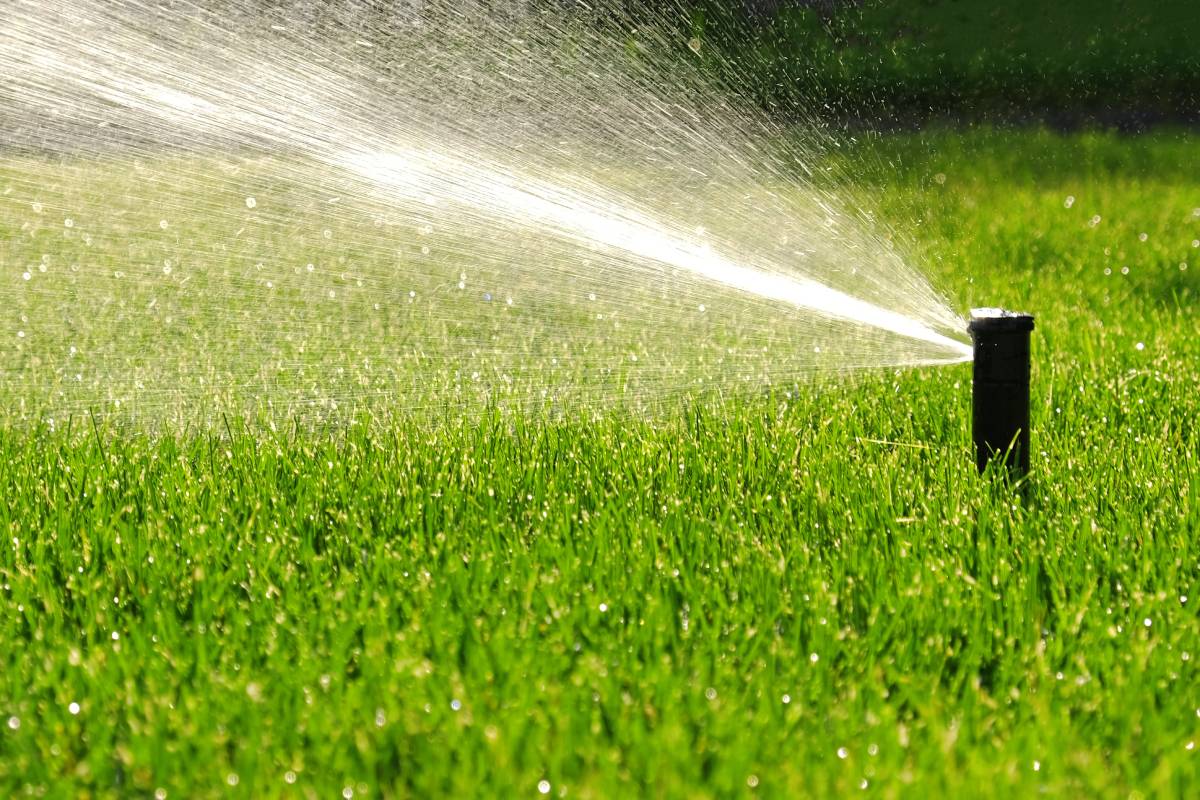A well-kept, green lawn is a true Australian dream — a place for barbecues, backyard cricket, and relaxing under the sun. But getting that lush, healthy look isn’t just about mowing and fertilising; it’s about knowing how much water your grass actually needs. Too little water and it turns brittle and brown. Too much, and you can suffocate the roots and waste one of Australia’s most precious resources: water.
So how do you know when and how much to water your lawn? The right amount depends on your grass type, soil composition, local climate, and watering habits. Once you understand these factors, you can easily find the balance between healthy growth and water efficiency.
This guide will walk you through how to know if you’re watering too much or too little, how to test your watering depth, and how to create a sustainable irrigation routine — perfect for Australian conditions.
Understanding Your Lawn’s Water Needs
In most parts of Australia, lawns need around 25–40 millimetres of water per week to stay healthy — whether that comes from rainfall or irrigation. But with our extreme weather patterns — from Perth’s dry summers to Sydney’s humid climate — no two lawns are exactly alike.
Let’s break down the key factors that determine how much water your lawn needs:
-
Soil Type
-
Sandy soil (common in coastal regions like Perth) drains quickly and can’t hold moisture for long. Lawns growing in sandy soil may need more frequent watering, though each watering should be light.
-
Clay soil (found in many Melbourne and Adelaide suburbs) holds moisture for longer but can easily become waterlogged. Overwatering this type leads to puddles and root rot.
-
Loam soil — a mix of sand, silt, and clay — provides the best balance of drainage and moisture retention, perfect for most turf varieties.
-
-
Grass Type
Australia’s diverse climates mean different regions suit different types of grass:-
Kikuyu: A tough, fast-growing grass that thrives in sunny areas and is great for family backyards. It’s drought-tolerant but benefits from deep watering once or twice a week in summer.
-
Buffalo (such as Sir Walter or Palmetto): Ideal for Australian conditions. It holds water well, grows in sun or partial shade, and doesn’t need constant watering.
-
Couch (Bermuda grass): Common in sports fields and warm areas. It prefers full sun and bounces back quickly after dry spells, though it needs regular deep watering during summer heat.
-
Zoysia: A low-maintenance option that requires less water once established, great for Australia’s warmer regions.
-
-
Climate and Season
Watering habits should always adjust with the seasons.-
Summer: High temperatures and evaporation rates mean your lawn may need watering two to three times per week, especially in dry inland or coastal areas.
-
Winter: Most lawns slow their growth and may not need watering at all, particularly in southern states where rainfall is higher.
-
Tropical areas (like Queensland and northern NSW) often experience heavy seasonal rains, so watering can be reduced during the wet season.
-
How to Measure Watering Depth
Watering deeply and infrequently is the golden rule. This encourages deeper root systems, which make your lawn more resilient to drought.
The easiest way to check if you’re watering deeply enough is the “tuna can test.”
-
Place a few empty tuna or cat food cans evenly around your lawn.
-
Run your sprinklers or irrigation system for 20–30 minutes.
-
Measure how much water has collected in each can.
You’re aiming for around 10–15 millimetres of water per session. If the cans have less than that, increase your watering time. If they overflow, you’re using too much water.
Signs You’re Overwatering Your Lawn
Australians tend to overwater more often than they think — and overwatering can cause more harm than good. Not only does it waste water, but it also weakens the root system, encourages weeds, and promotes fungal growth.
Here are the telltale signs of overwatering:
-
Soggy or Spongy Soil – If the ground feels squishy or muddy when you step on it, it’s too wet.
-
Fungal Patches or Mushrooms – Fungi thrive in moist conditions. If you see mushrooms popping up, you’re likely overdoing it.
-
Yellowing Grass – Constant moisture can suffocate roots, turning the grass yellow or pale green.
-
Weed Growth – Overwatered lawns often develop weeds like nutgrass and clover that thrive in wet soil.
-
Shallow Roots – Too much surface watering stops roots from growing deeper, making your lawn less drought-tolerant.
To fix this, reduce watering frequency and let the soil dry out between sessions. You can also aerate your lawn to improve drainage.
Signs You’re Underwatering Your Lawn
On the other hand, if your lawn isn’t getting enough water, you’ll see signs of stress:
-
Blue-Grey Colour – Grass blades start to curl and turn dull before they go brown.
-
Footprints Stay Visible – If your footprints or mower tracks don’t bounce back, your grass lacks moisture.
-
Dry, Cracked Soil – When soil becomes too hard, water struggles to penetrate deeply.
-
Patchy or Thinning Grass – Underwatered lawns grow unevenly, leaving bare spots for weeds to invade.
If you see these symptoms, it’s time for a deep soak. Water slowly until the soil is moist at least 10–15 centimetres deep.
The Best Time to Water in Australia
Timing matters just as much as quantity. The best time to water your lawn in Australia is early morning between 5 a.m. and 9 a.m. when the air is cool and wind speeds are low. This allows water to soak into the soil before it evaporates.
Avoid watering at night, as prolonged dampness can lead to fungal diseases — especially in humid climates like Brisbane or Sydney.
How Often Should You Water?
-
Summer: Once or twice a week for most lawns, ensuring deep watering each time. In extremely hot regions like Perth or Darwin, you might need an extra light session.
-
Autumn and Spring: Once a week or every 10 days is usually enough, depending on rainfall.
-
Winter: Most lawns need little or no irrigation unless there’s a dry spell.
If you have a rain gauge, use it to measure natural rainfall so you can adjust your watering schedule. A total of 25–40 mm per week (including rain) is ideal.
How to Improve Water Efficiency
Australia’s water restrictions and dry climate make efficient watering essential. You can reduce water waste and still have a stunning lawn with a few smart techniques:
-
Install a Smart Irrigation System
Modern systems adjust watering automatically based on soil moisture and weather forecasts. They help conserve water while ensuring your lawn gets exactly what it needs. -
Aerate Your Lawn
Aerating once or twice a year allows air and water to reach the roots, preventing compaction and improving absorption. -
Add Organic Matter
Spreading compost or organic topdressing improves the soil’s ability to retain moisture and nutrients. -
Mow High
Keep your grass slightly longer during hot months — around 5–7 cm tall. Longer blades provide shade for the roots, reducing evaporation. -
Water in Zones
Not every part of your lawn needs the same amount of water. Shaded areas retain moisture longer than sunny spots. -
Mulch Garden Beds
Mulching around the edges of your lawn helps retain soil moisture and prevent runoff.
Should You Rely on Rainfall Alone?
Australia’s rainfall can be unpredictable. Some regions experience regular showers, while others go months without rain. Installing a rainwater tank or harvesting system is a smart way to store water for irrigation during dry periods.
Using collected rainwater is not only sustainable but also better for your lawn — it’s naturally soft and free from chlorine and chemicals found in tap water.
Quick Watering Tips for Australian Homeowners
- Avoid watering on windy days — strong winds cause uneven coverage and wasted water.
- Check for leaks and sprinkler blockages regularly.
- Use a soil moisture meter to see how damp the soil is beneath the surface.
- Water new turf daily for the first 2–3 weeks until roots establish, then reduce gradually.
- Always follow local council watering restrictions, which vary by state and season.
Final Thoughts
Mastering your lawn’s watering needs isn’t about rigid schedules — it’s about understanding your environment. By learning to read the signs of overwatering and underwatering, and by watering deeply and efficiently, you can create a lawn that stays lush, green, and sustainable all year round — even in Australia’s challenging climate.
Whether you’re laying new turf or rejuvenating an old patch, choosing the right grass variety and maintaining consistent watering habits is key. For premium, drought-tolerant turf that’s perfectly suited to Australian conditions, trust Direct Turf — your go-to source for high-quality lawn solutions, expert advice, and long-lasting green results.
























